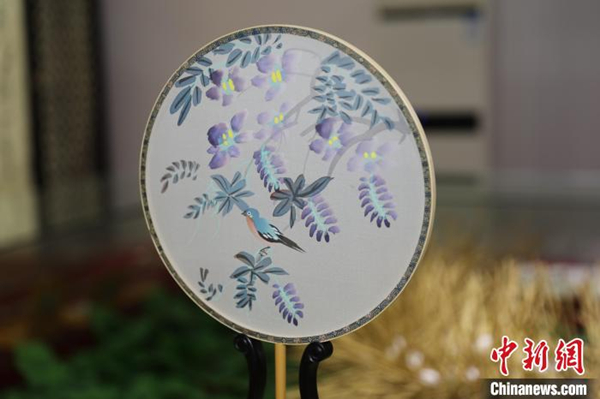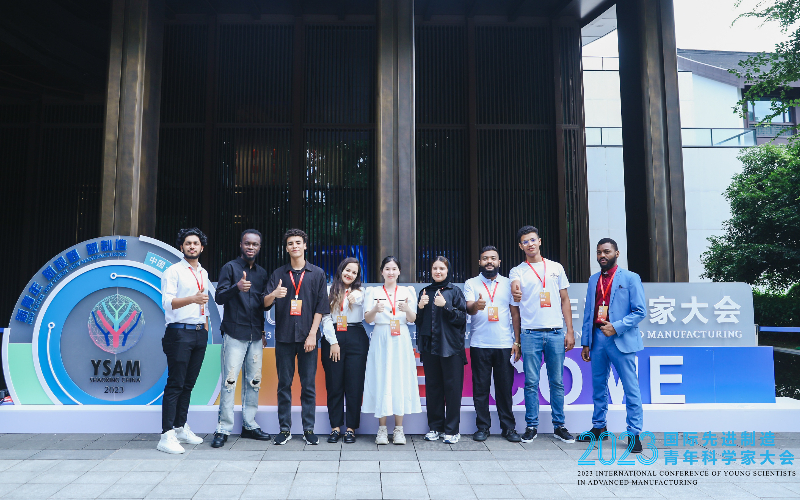Millennium-old silk damask weaving craft sees revival through innovation

Photo shows a round fan made of silk damask. [Chinanews.com/Shi Zinan]
The Shuanglin silk damask weaving technique, enjoying a history of over 4,700 years, is known as the "flower of oriental silk weaving craftsmanship."
According to historical records, silk damask was already a major fabric exported to over 10 countries and regions of the world during the Liu Song Dynasty (420-479), one of the Southern Dynasties in China (420-589).
In the 1980s, at 17 years old Zheng Xiaohua began working at the Shuanglin Silk Damask Factory in Shuanglin township, Huzhou city, east China's Zhejiang Province. Zheng recalls experts coming from museums around the world during that time to the factory during that time to admire the antiqued silk damask works produced there. During the same period, the antiqued silk damask works manufactured at the factory were used by multiple museums at home and abroad as a material to repair ancient books, paintings and cultural relics made of silk.
After the Shuanglin Silk Damask Factory was restructured amid the transformation of enterprises in townships across China, Zheng bought the production plant and technical materials once owned by the factory, founding Yunhe Shuanglin Silk Damask Co., Ltd.
By learning the silk damask weaving skills from elderly craftsmen, Zheng eventually brought the craft back to life.
"We've developed several collections of antiqued silk damask products, which have been exclusively used to repair ancient calligraphy and painting works, as well as cultural relics made of silk damask. Our products are available at around 95 percent of museums in the world," Zheng introduced.
In 2008, the Shuanglin silk damask was named a national intangible cultural heritage item in China, and was chosen as one of the raw materials for making the certificates of honor handed to athletes during the Beijing 2008 Summer Olympics.
The Shuanglin silk damask was again chosen as a raw material for making the certificates of honor handed to athletes during the Beijing 2022 Winter Olympics.
"This has helped us better inherit and carry forward the traditional culture, and has served as an opportunity for us to showcase China's excellent traditional culture to the world," Zheng expressed.
In 2014, Zheng Xiaohua's daughter, Zheng Yifei, took over the responsibility of carrying forward the traditional craft from her father. While passing on the craft, she has embraced innovation, making use of the Internet to promote the products and injecting renewed impetus to the traditional craft by developing cultural and creative products.
"An increasing number of young people have begun to cultivate an interest in silk damask products. At present, we're working with several clothing design studios to incorporate silk damask into clothing products, enabling the fabric to become a part of people's life," said Zheng Yifei.





 play
play
